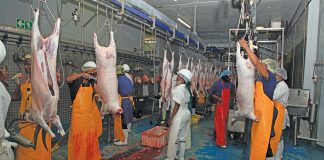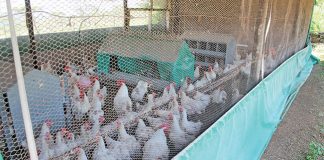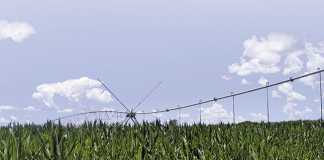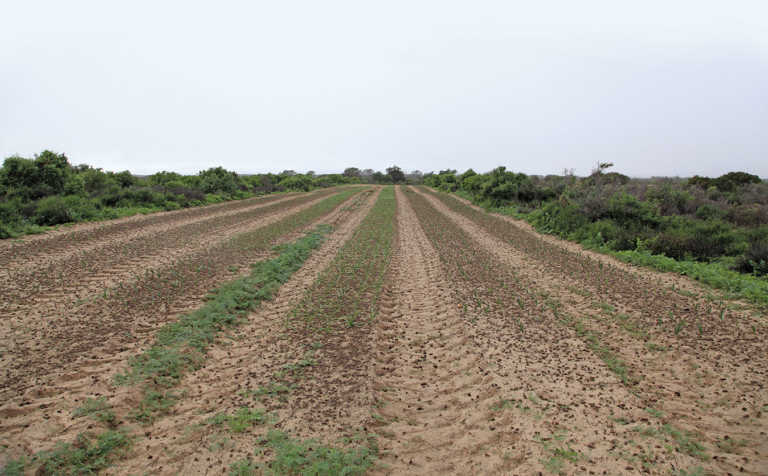
Photo: Glenneis Kriel
When Susi Engelbrecht and her husband Theunis purchased a small section of Suurfontein farm near Lamberts Bay on the West Coast in 1999, their initial goal was to supply the market with organic fresh vegetables.
They worked hard to gain and maintain the status of independent supplier to one of South Africa’s leading retail groups, but gave up after about five years.
“We learnt valuable lessons about packing, processing, ethical production and food safety, but after a while realised we were too far from the market and too small to justify all the effort we were putting into production. A lot of our produce, while extremely tasty, went to waste because it didn’t meet the high standards of the retailer,” Engelbrecht recalls.
The couple decided instead to focus on greens and root vegetables, which thrive under the region’s arid conditions, and to distribute them through Cape Town’s network of informal markets, organic box systems and stores.
They also diversified production by supplying the seed market and adding value to “every last thing” produced on the farm.
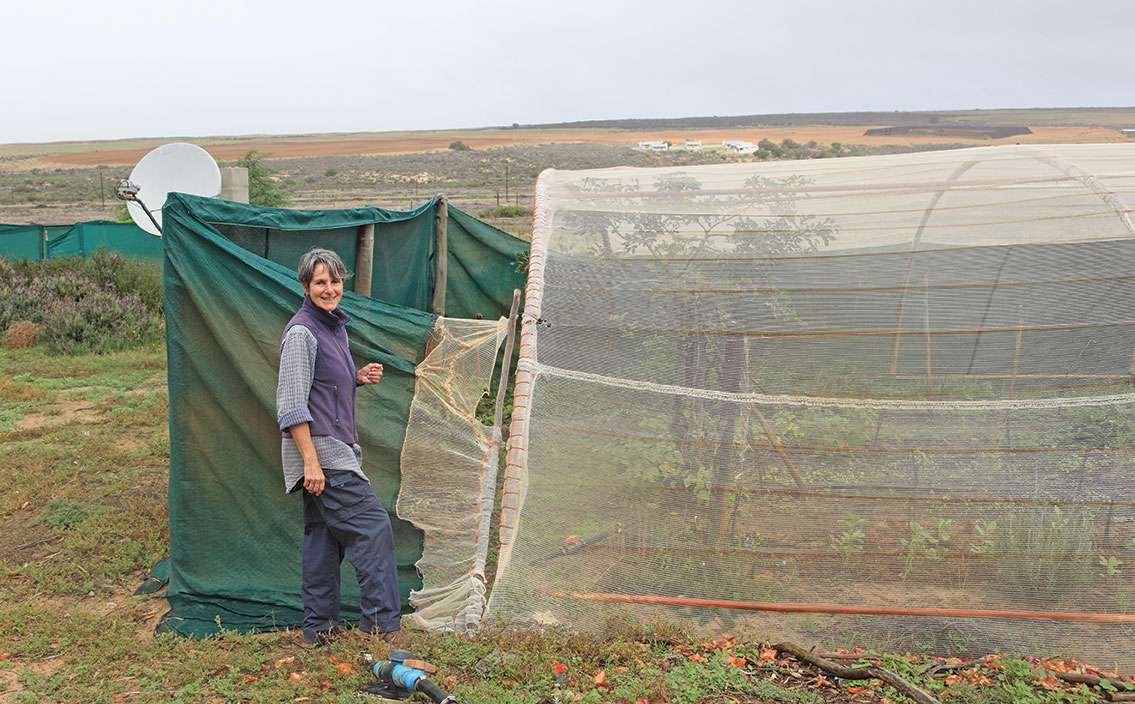
Engelbrecht says their decision to target the seed market originated in their own problems sourcing organic seed in South Africa. Further investigation also revealed that their dry climate was better suited to seed than fresh vegetable production.
Sandveld Organics seed can be ordered online via the farm’s website, or through selected online shops and retail outlets.
Production
The couple’s farm covers 150ha, of which 10ha are under irrigation. Production has been downscaled to a few hectares a year, not least due to the ongoing drought.
“The drought has left wild creatures such as steenbok, rabbits and guinea fowl with very little to eat in the veld, so they come to our lands to feed. Our fences can’t keep them out, so we’ve downscaled production to grow things they don’t like, such as onions and garlic,” says Engelbrecht.
Small, protected production areas have been created with recycled building material and shade-nets near the farmhouse, and a wider variety of crops are currently grown for seed. Under normal conditions, a large range of vegetables and herbs, including carrots, beetroot, peas, kohlrabi, okra and artichokes, are produced open-field.
“We try to create a balanced ecosystem through companion planting to reduce pest attacks and get the best results. Garlic or seed onions, for example, are planted with carrots or celery,” she explains.
Soil quality is a major challenge, as the soil on the farm is sandy and has a low carbon content.
“Building up the carbon level is an ongoing battle as this element gets burnt out of the soil each summer due to the extreme heat. In many ways, our soil is similar to a hydroponic growth system, where you have to add all the nutrients required for production.”
According to Engelbrecht, an inspector who visited the farm could not believe they were attempting to produce anything in soil of such poor quality.
“A problem with overseas organic certification companies is that their regulations are tailored to European production circumstances. They often don’t have sustainable solutions for the unique production challenges we experience in African soils.”
The Engelbrechts take soil samples annually to identify nutritional shortages. These are then corrected with the help of registered organic products before new crops are planted.
The soil is generally deficient in boron and manganese, but copper levels are gradually improving.
The farm relies heavily on green manuring, pelleted chicken manure and compost tea to improve soil nutrient levels, structure and health.
Seagro Organic Plant Food, a valuable organic fertiliser that recently regained its organic certification, is also used.
”It was banned for a couple of years because it contained a preservative that wasn’t allowed by international organic standards,” explains Engelbrecht.
Due to processing constraints and a shortage of guaranteed GMO-free animal manure, compost is not produced in quantity on the farm.
“Under our dry climatic conditions, you need to constantly work compost heaps with water to keep them moist, otherwise the material won’t break down. It’s also difficult to source manure, as most of the cattle and sheep in the region are produced under extensive veld conditions.”
The compost tea is made on-farm from approved chicken manure and a mixture of herbs and plants.
“We even use weeds that grow well to add ‘life force’ to the brew,” adds Engelbrecht.
The compost tea mixture is aerated with a fish tank pump for two days before it is applied to the vegetable lands with overhead sprinklers.
“You have to apply it as soon as possible after brewing to gain maximum benefit from the multitude of living micro-organisms. It’s usually applied when the plants look as if they need it: before transplanting, after a heatwave, or after being sandblasted by our heavy winds.”
Each production strip is fallowed for at least four years after production to break disease cycles. At the end of this fallowing, either vetch or cowpea is planted as green manure to cover the soil, improve the soil structure, and boost soil nutrient levels.
Vetch, a fast-spreading winter climber, is used to help create a thick mulch, while cowpea, a summer crop, is used to shield areas under chillies or aubergines.
Plants used as green manure are worked into the soil with a rotovator just before setting seed.
Engelbrecht also uses weeds, except for quick grass (kweek), as mulch material and green manure to reduce evaporation, especially during drought conditions.
“Kweek is a real problem here. We have to remove it root-and-all or it’ll take over the farm. We’re more merciful with the other weeds; they help to serve as food and habitat for certain organisms.”
Pest management
The couple initially planted a few hectares of certified organic potatoes, on a far smaller scale than the commercial potato farmers in the area.
After a few harvests, however, it was clear that they did better with their other produce, and stopped the potatoes.
From a pest management perspective, it also made little sense to continue the potatoes, as this is a popular crop in the region.
“We were afraid of being scapegoated for potato disease outbreaks because of our farming-with-nature approach,” explains Engelbrecht. “In addition, many potato pests were likely to seek out our farm in the absence of chemical control methods. We realised we had to focus on crops that were new or not widely produced in the area.”
Their pest management strategy is in harmony with nature, as far as possible.
“With our companion planting system and the use of natural veld in between lands, we try to create an environment where beneficial insects keep harmful insects in check. We act against a specific insect only if we have a serious problem.
In this case, we may resort to certified organic pest control substances. Or I’ll catch some of these problem insects, make a brew out of them and spray the problem areas. The drawback is that this drives out all these organisms, leaving nothing for the beneficial insects to feed on.”
Mildew, encouraged by the seasonal morning fog, also has to be managed carefully, she says.
“We space plants for optimal ventilation and spray sulphur from September to October to prevent the disease.”
Harvesting seed and adding value
According to Engelbrecht, harvesting seed is not difficult. Plants such as onions and carrots are left to go to seed, and the heads are cut off and left to dry in a cloth bag in a dry area.
Other vegetables are harvested and cut open to remove the seeds, which are washed, strained and spread out to dry.
“We process the juice and flesh into preserves. Nothing goes to waste,” she concludes.
Email Susi Engelbrecht at [email protected]. Visit sandveldorganics.co.za.









